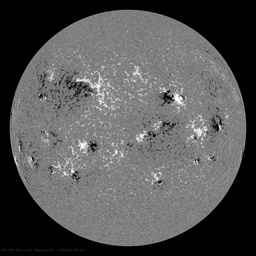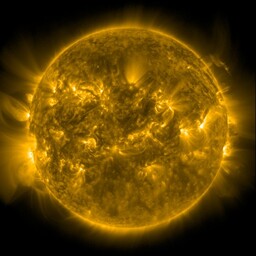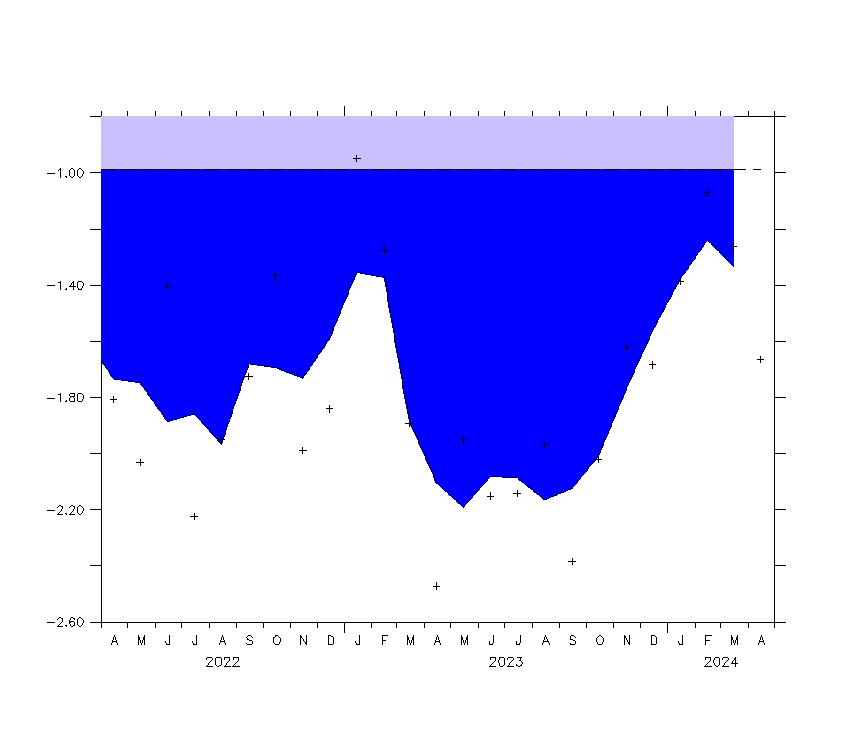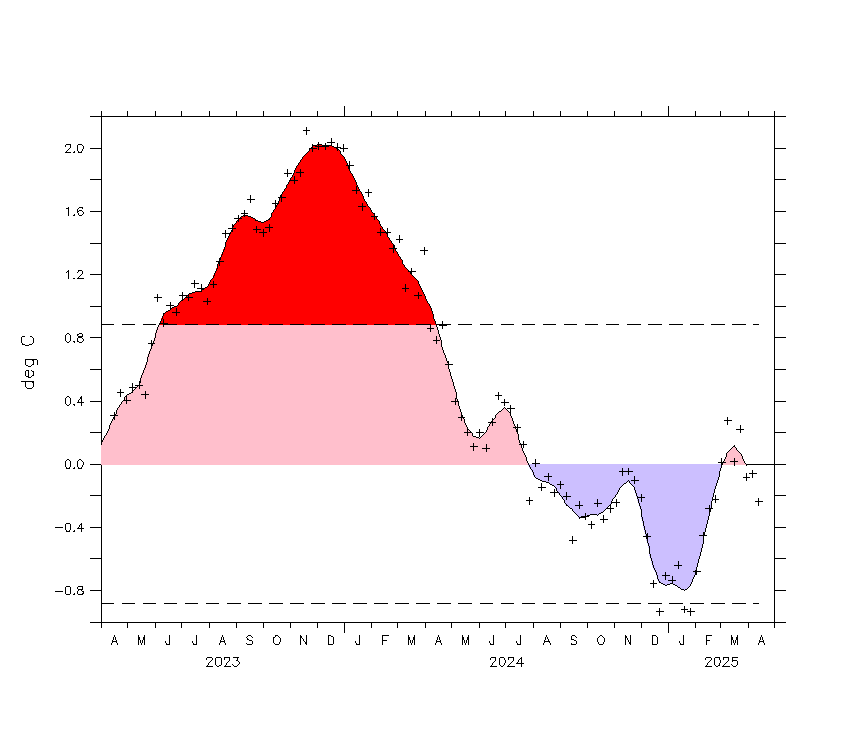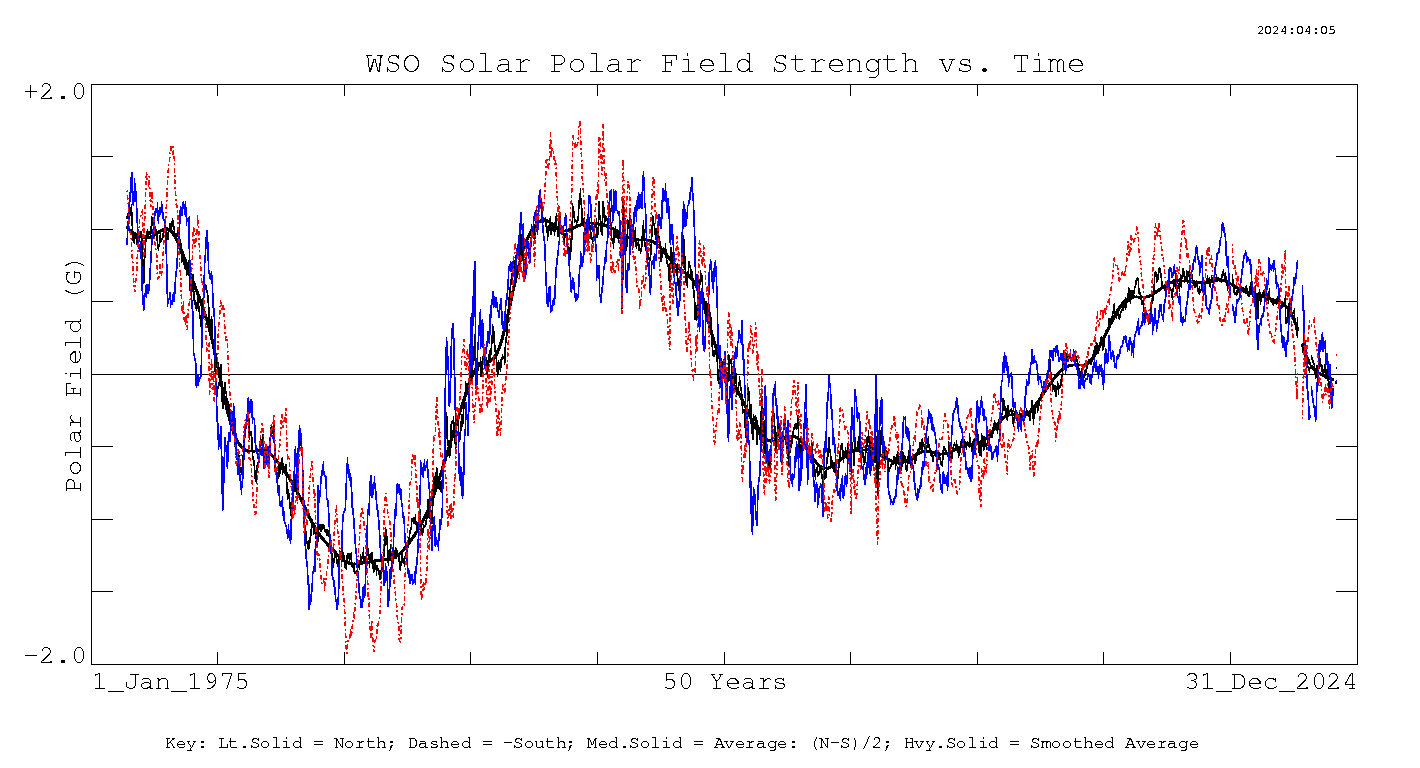
As per Carl.
There are two online sources of Dr Theodor Landscheidt's papers I am aware of - if anyone knows of any other online papers, please post the URL's in the comments below. Perhaps the best known of these is the Climate Change: Guest Papers page of the late John Daly's Still Waiting for Greenhouse website.
A probably less well known source of many of his earlier papers is the SELECTED PUBLICATION OF THEODOR LANDSCHEIDT page on the Bourabai Research website, where you will find many of his methods in far more detail. Below is a list of direct links to these papers mainly in chronological order from both the websites mentioned above. I fully acknowledge the service to the community both those websites are providing by making these quite interesting papers freely available. The comments / abstracts accompanying each link are copied straight out of the page it was found on for your convenience in looking for specific material: UPDATE: thanks to storage space generously donated by my brother David, PDF versions of all these papers are now available to make it easier for researchers looking into Dr Theodor Landscheidt's work, with links below.
SWINGING SUN, 79-YEAR CYCLE AND CLIMATIC CHANGE [PDF 309K] J. interdiscipl. Cycle Res., 1981, vol. 12, number 1, pp. 3-19. ABSTRACT. The secular cycle of solar activity is related to the sun's oscillatory motion about the center of mass of the solar system. Comparatively short periods of revolution with relatively high rates of curvature constitute a potential for crucial values of the time integral of torque AL = J t0 r (t) dt which seem to give rise to a weak but long lasting flow of solar plasma that modulates short-term flow due to the dynamo effect. Relatively strong impulses of the torque A L occur at mean intervals of 19.86 years. Four consecutive impulses respectively define a permanent wave with a quasiperiod of 79.46 years which determines the distribution of positive and negative extrema in activity. Phases of 0° or 90° indicate a potential for peaks and phases of 180° or 270° can lead to troughs. Such potentials are actually released if A L transgresses a definite threshold value. The ensuing interval variations in the secular cycle are verified by records of sunspots and aurorae dating back to the 4th century AD. Rare activity-deficient periods like the Maunder Minimum, which according to Eddy et al. are related to changes in the Earth's climate, solely occur when AL reaches exceptional values meeting a special criterion. This is confirmed by radiocarbon data going back to the 6th millenimum BC. The next minimum in the 79-year cycle will occur in 1990. It will be more pronounced than the minimum in 1811.
CYCLES OF SOLAR FLARES AND WEATHER [PDF 202K] In: Moerner, N.A. & Karlen, W., Hsg.: Climatic changes on a yearly to millenial basis. Dordrecht, D. Reidel, 1984, 475, 476. ABSTRACT. Sunspots only constitute potentials of solar activity which are actually released by solar eruptions. Single energetic flares and periods of enhanced eruptional activity seem to be related to weath-er. This is valid for the quality of weather forecasts (Scherhag, Reiter), atmospheric circulation changes (Schuurmans) , rainfall (Clarkson) , and thunderstorm incidence (Bossolasco et a1.). There are models that explain this effect (e.g. Roberts and Olson, Flarkson, Neubauer, and Bucha). This poses the problem of the prediction of solar flares. Such eruptions seem to be distributed in a stochastic manner. But closer examination reveals cycles of solar flares with mean periods of 9 years, 2.25 years, and 3 months. They are accessible to forecasts, because they run parallel with special phases in the Sun's motion about the center of mass of the solar system, and with a cyclic pattern formed b/ the change in the angular acceleration of the vector of the tidal forces of the planets Venus, Earth, and Jupiter.
CYCLIC DISTRIBUTION OF ENERGETIC X-RAY FLARES [PDF 161K] Solar Physics 107 (1986) 195 - 199. ABSTRACT. The Blackman-Tukey power spectrum of flare generated X-ray bursts > X1 observed from 1970 to 1982 by satellite instrumentation (SOLRAD/SMS/GOES) shows prominent peaks at 156, 4.8, 2.8, and 1.1 months. According to a statistical test of the significance of the deviation of these peaks from Markov red noise, the peaks at 2.8 and 1.1 months are significant at the 99% confidence level while the peak at 4.8 months reaches the 95 % level. A replication by means of the maximum entropy spectral analysis (MEM) yields the same prominent peaks at the same frequencies.
SOLAR ROTATION, IMPULSES OF THE TORQUE IN THE SUN'S MOTION, AND CLIMATIC VARIATION [PDF 461K] Climatic Change 12, 265-295, 1988. ABSTRACT. Running variance analysis and maximum entropy spectral analysis applied to Mount Wilson rotation data yield arguments in favor of a connection between variations in the Sun's rotation rate, energetic X-ray flares, and impulses of the torque (IOT) in the Sun's irregular motion about the barycenter of the planetary system. Such IOT, that have been shown to be related to the secular cycle of solar activity and excursions of the Maunder minimum type, also seem to be linked to outstanding peaks in geomagnetic activity, maxima in ozone concentration, incidence of blocking type circulation, as well as rainfall over Central Europe, England/Wales, eastern United States, and India. Statistical tests, that confirm these links, additionally point to IOT connection with temperature in Central Europe and the number of icebergs that pass south of latitude 48° N. IOT relationship with X-ray flares and strong geomagnetic storms was tested in successful long range forecasts.
Sun-Earth-Man: a Mesh of Cosmic Oscillations (Book 1989) [PDF 3.9M] How planets regulate solar eruptions, geomagnetic storms, conditions of life, and economic cycles.
CREATIVE FUNCTIONS OF CYCLES: Predictable Phase-Shift in Solar-Terrestrial Cycles [PDF 269K] Foundation for the Study of Cycles, May/June 1989 ABSTRACT. Recent research has shown that cycles are at the core of creativity. They form antagonistic centers of polar tension, the competing realms of which generate fractal boundaries, sites of instability where new forms emerge. This knowledge, when applied to cycles and boundaries in the solar system, makes it possible to predict phases of instability, phase-shift, and emergence of new patterns in solar-terrestrial cycles.
PREDICTABLE CYCLES IN GEOMAGNETIC ACTIVITY AND OZONE LEVELS [PDF 254K] Foundation for the Study of Cycles, Sept/Oct 1989 Geomagnetic storms, which are released by energetic solar eruptions, are important geophysical events. Newer results indicate that there is a connection with weather. There is shown the zonal type of atmospheric circulation as a result of geomagnetic disturbances caused by the sun's erup-tional activity, and meridional circulation related to a lull in geomagnetic activity. This is a permanent feature that regulates the prevalence of warm westerly flow or cool arctic air over Europe and North America. MINI-CRASH IN TUNE WITH COSMIC RYTHMS [PDF 626K] Foundation for the Study of Cycles, Nov/Dec 1989 Energetic solar eruptions and corresponding disturbances in the earth's magnetic field form a solar-terrestrial bridge for conveying instability, which induces a change of pattern in all kinds of terrestrial cycles. The last phase of major instability started in 1968 and ended in 1972. The next phase will begin in 2002 and come to an end in 2011.
RELATIONSHIP BETWEEN RAINFALL IN THE NORTHERN HEMISPHERE AND IMPULSES OF THE TORQUE IN THE SUN'S MOTION [PDF 269K] In: K. H. Schatten and A. Arking, eds.: Climate impact of solar variability. Greenbelt, NASA, 259-266, 1990. The analysis of major change in the angular momentum of the sun's irregular motion about the barycenter of the solar system, represented by extrema in the running variance of impulses of the torque (IOT), discloses a connection with both extrema in the Gleissberg cycle of secular sunspot activity and maxima in the thickness of varves from Lake Saki, Crimea. This significant relationship can be traced back to the 7th century, further inquiries link the running variance in IOT to rainfall over central Europe, England, Wales, eastern United States, and India, as well as to temperature in Europe. This significant correlation covers more than 130 years.
THE GOLDEN SECTION: A Building Block of Cyclic Structure [PDF 558K] Foundation for the Study of Cycles, May/June 1992 ABSTRACT. In this paper it is shown how to reveal the hidden cycles in the Nature, society and economy. The mechanism of forming of such cycles and their structure and are shown.
Solar Activity: A Dominant Factor in Climate Dynamics [PDF 676K] (1998) Demonstrates that climate changes are predominantly the result of solar activity, not human activity). See also
Comments on 'Solar Activity: A Dominant Factor in Climate Dynamics' [PDF 126K] by Charles 'Chick' F. Keller (USA) Disputes findings by Dr Landscheidt on solar-climate linkages. Also, see `Open Review' of Chick Keller's paper Part 1 [PDF 269K] and Part 2 [PDF 139K].
EXTREMA IN SUNSPOT CYCLE LINKED TO SUN'S MOTION [PDF 203K] Solar Physics 189, 413 - 424, 1999 ABSTRACT. Partitions of 178.8-year intervals between instances of retrograde motion in the Sun's oscillation about the center of mass of the solar system seem to provide synchronization points for the timing of minima and maxima in the 11 -year sunspot cycle. In the investigated period 1632-1990, the statistical significance of the relationship goes beyond the level P = 0.001. The extrapolation of the observed pattern points to sunspot maxima around 2000.6 and 2011.8. If a further connection with long-range variations in sunspot intensity proves reliable, four to five weak sunspot cycles (R < 80) are to be expected after cycle 23 with medium strength (R ~ 100).
SOLAR WIND NEAR EARTH: INDICATOR OF VARIATIONS IN GLOBAL TEMPERATURE [PDF 144K] ESA-SP 463,497-500, 2000. Abstract. Near-Earth variations in the solar wind, measured by the geomagnetic aa index since 1868, are closely correlated with global temperature (r = 0.96; P < 10-7). Geomagnetic activity leads temperature by 4 to 8 years. Allowing for this temperature lag, an outstanding aa peak around 1990 could explain the high global temperature in 1998. After 1990 the geomagnetic aa data show a steep decline comparable to the decrease between 1955 and 1967, followed by falling temperatures from 1961 through 1973 in spite of growing anthropogenic CO2 emissions. This points to decreasing global temperature during the next 10 years.
Solar Activity Controls El Nino and La Nina [PDF 293K] A new solar model to explain the timing of previous ENSO events and to predict future ones. Plus,
Reactions to Landscheidt's paper (415 KB Zip file), or [PDFs: Part 1 397K, Part 2 423K, Part 3 308K, Part 4 447K].
'Top Climate Events' Linked to Solar Motion Cycle (3 Jan 2000) [PDF 172K] NOAA's top climate events of the 20th Century correlate with solar motion cycle
Sun's Role in the Satellite-Balloon-Surface Issue (26 Mar 2000) [PDF 66K] How the satellite and sonde data shows a more natural response to the sun than does the surface record.
New Confirmation of Strong Solar Forcing of Climate (7 Nov 2000) [PDF 96K]. Recent flooding of the River Po in Italy was predicted in advance through Solar Motion Cycle analysis.
Solar Eruptions Linked to North Atlantic Oscillation (9 April 2001) [PDF]. After predicting that the next El Nino will peak late next year, Dr Landscheidt now shows that a similar correlation exists between solar motion/activity cycles and the N.A.O.
Trends in Pacific Decadal Oscillation Subjected To Solar Forcing (25 April 2001) [PDF 173K]. First ENSO, then the NAO (item above), now Dr Landscheidt completes the trilogy demonstrating that the 50-year Pacific Decadal Oscillation is also a product of solar forcing, not random chance.
El Nino Forecast Revisited (19 March 02) [PDF 287K] Dr Landscheidt reviews his prediction made over 3 years ago on this website of the El Nino now developing, and describes his method in layman's terms for the benefit of non-expert readers.
Long-Range Forecast of U.S. Drought Based on Solar Activity (15 Mar 2003) [PDF 250K]. Following from his stunning success in predicting the timing of the current El Nino over 4 years ago, Dr Theodor Landscheidt has now applied his solar analysis technique to the problem of periodic drought conditions in the U.S. He has developed a long-range forecast covering the period up to 2030. He predicts that the next extended wet period should begin around 2007 and last about 7 to 8 years. A drought peak is to be expected from 2025 on and should last about five years.
New Little Ice Age instead of global warming [PDF 429K] Energy and Environment 14, 327-350. - 2003 Abstract: Analysis of the sun's varying activity in the last two millennia indicates that contrary to the IPCC's speculation about man-made global warming as high as 5.8° C within the next hundred years, a long period of cool climate with its coldest phase around 2030 is to be expected. It is shown that minima in the 80 to 90-year Gleissberg cycle of solar activity, coinciding with periods of cool climate on Earth, are consistently linked to an 83-year cycle in the change of the rotary force driving the sun's oscillatory motion about the centre of mass of the solar system. As the future course of this cycle and its amplitudes can be computed, it can be seen that the Gleissberg minimum around 2030 and another one around 2200 will be of the Maunder minimum type accompanied by severe cooling on Earth. This forecast should prove skillful as other long-range forecasts of climate phenomena, based on cycles in the sun's orbital motion, have turned out correct as for instance the prediction of the last three El Nino years before the respective event.
Decadal-Scale Variations in El-Nino Intensity (20 May 2003) [PDF 131K]. Where does El Nino and La Nina go from here? Using his solar motions analysis (which successfully predicted the last La Nina and the recent El Nino), Dr Landscheidt looks 80 years into the future and finds La Nina more dominant.
Variations in CO2 Growth Rate Associated with Solar Activity (21 Sept 03) [PDF 103K]. Solar activity and solar motion variations are found to explain much of the variability of CO2 growth over the last several decades. The average annual increase over the last 10 years was 1.66 ppmv/yr, which is less than half that assumed by climate models.
The Golden Section: A Cosmic Principle [PDF 728K] Considerations, V10, N1, 2005


